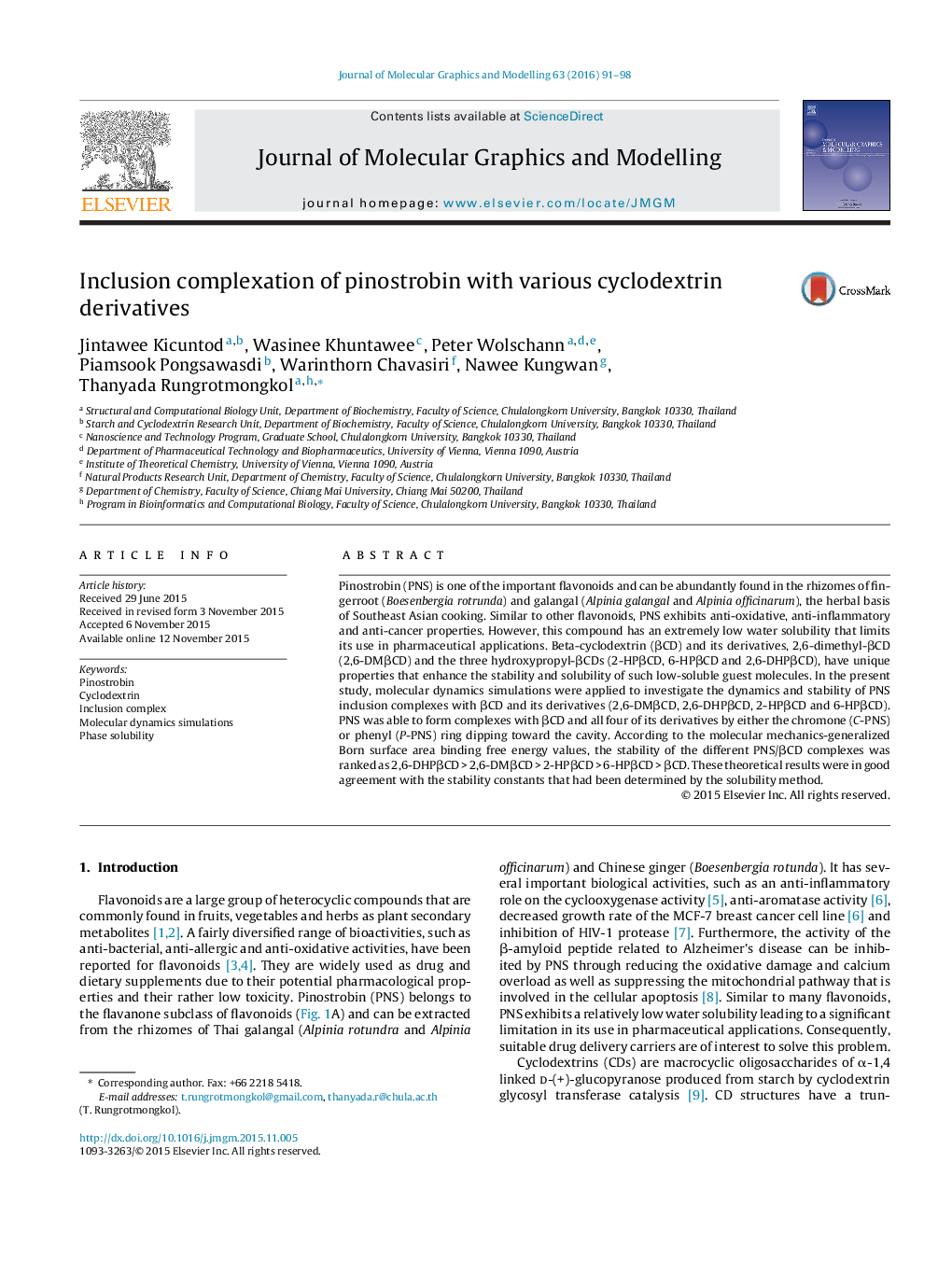| Article ID | Journal | Published Year | Pages | File Type |
|---|---|---|---|---|
| 443249 | Journal of Molecular Graphics and Modelling | 2016 | 8 Pages |
•Pinostrobin binding forced the structure of βCDs to adopt the most stable conformation.•Stability of inclusion complex with hydrophilic derivatives of βCD is higher than the native βCD.•A success of theoretical approach in prediction the suitable host-guest complexation.
Pinostrobin (PNS) is one of the important flavonoids and can be abundantly found in the rhizomes of fingerroot (Boesenbergia rotrunda) and galangal (Alpinia galangal and Alpinia officinarum), the herbal basis of Southeast Asian cooking. Similar to other flavonoids, PNS exhibits anti-oxidative, anti-inflammatory and anti-cancer properties. However, this compound has an extremely low water solubility that limits its use in pharmaceutical applications. Beta-cyclodextrin (βCD) and its derivatives, 2,6-dimethyl-βCD (2,6-DMβCD) and the three hydroxypropyl-βCDs (2-HPβCD, 6-HPβCD and 2,6-DHPβCD), have unique properties that enhance the stability and solubility of such low-soluble guest molecules. In the present study, molecular dynamics simulations were applied to investigate the dynamics and stability of PNS inclusion complexes with βCD and its derivatives (2,6-DMβCD, 2,6-DHPβCD, 2-HPβCD and 6-HPβCD). PNS was able to form complexes with βCD and all four of its derivatives by either the chromone (C-PNS) or phenyl (P-PNS) ring dipping toward the cavity. According to the molecular mechanics-generalized Born surface area binding free energy values, the stability of the different PNS/βCD complexes was ranked as 2,6-DHPβCD > 2,6-DMβCD > 2-HPβCD > 6-HPβCD > βCD. These theoretical results were in good agreement with the stability constants that had been determined by the solubility method.
Graphical abstractThe correlation between the experimental and calculated binding free energies for the inclusion complexes between pinostrobin and βCDs.Figure optionsDownload full-size imageDownload high-quality image (50 K)Download as PowerPoint slide
